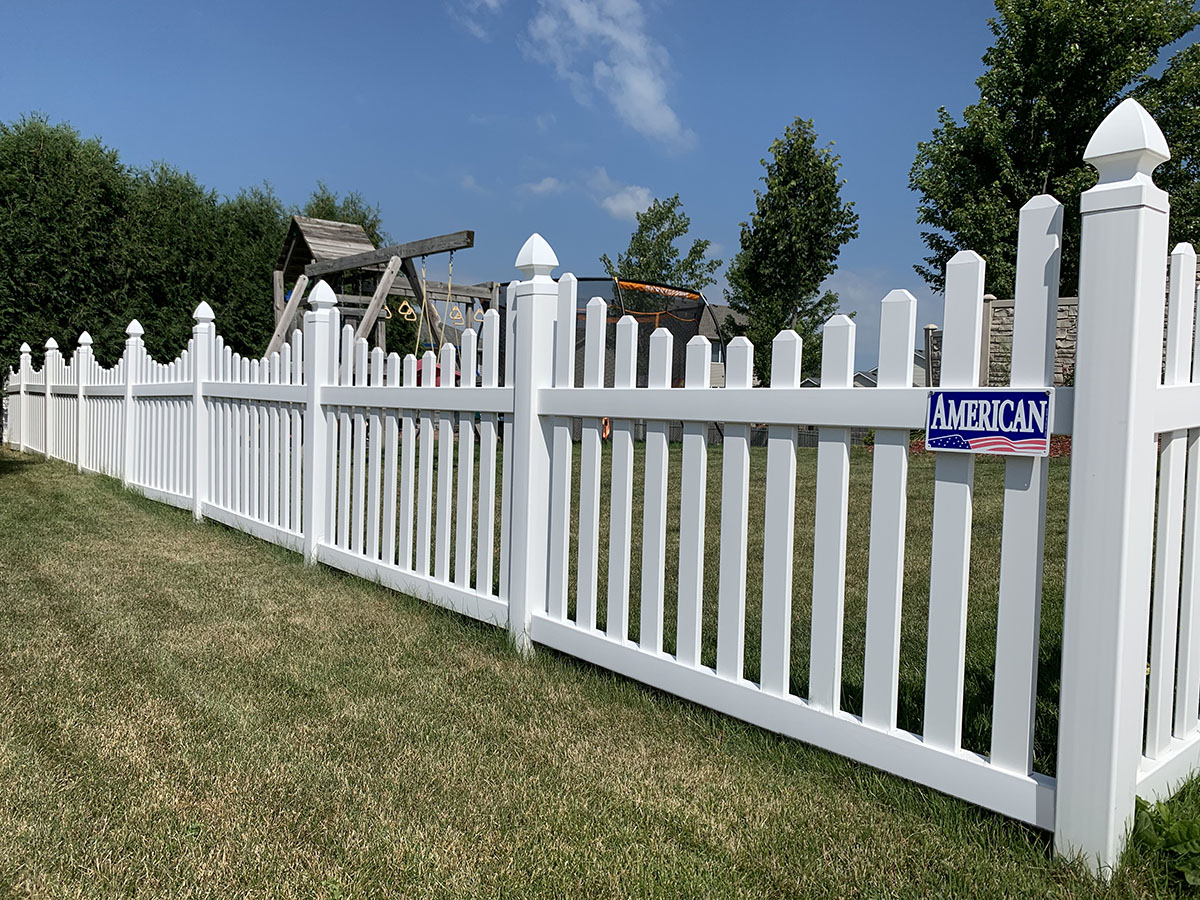All Categories
Featured
Setting up a fence on your home can add privacy, safety and security, and aesthetic appeal, however prior to you start digging holes and setting blog posts, it's necessary to understand whether you need a permit. The type of fence you prepare to set up, where it will certainly be placed, and regional zoning regulations can all affect the permitting process. Not getting the required licenses could result in fines or the need to eliminate the fence. Below's what you require to know to guarantee a smooth setup procedure.
Why Are Permits Needed for Fencing Installation? Permits are important for making certain that your fencing adheres to local zoning legislations and building regulations. These regulations aid make sure the safety and security of your residential property and the surrounding area. Furthermore, permits protect against conflicts with next-door neighbors or regional authorities, specifically when it comes to home lines, height limitations, and total design.
Oftentimes, local authorities call for licenses to manage things like exposure at crossways or the proximity of a fencing to public rooms like pathways or roads. Permits additionally help make certain that fencings are mounted properly and safely, especially when it involves special materials or high fences.
Common Sorts Of Licenses for Fence Setup. The type of fencing you desire to install and your location will certainly figure out which authorizations are called for. Here are one of the most typical kinds:
Structure Authorization. A building permit is generally needed for fencings that go beyond certain height limits (frequently above 6 feet), are situated near a public roadway or sidewalk, or are made from specific products. Structure permits ensure that the framework meets local structure codes, consisting of safety and security criteria.
Zoning Authorization. Zoning permits are frequently needed to guarantee that your fence conforms with regional zoning laws. Zoning laws can specify where a fencing can be positioned on your residential property (e.g., along residential property lines or ahead lawns), along with established limitations on fence height. These laws are developed to avoid obstructions that could affect website traffic safety and security or neighborhood looks.
![]()
Problem License. In some locations, you may require a setback authorization to place your fence a specific distance from building energies, roadways, or lines. Problems are meant to maintain correct space in between frameworks and building borders, decreasing prospective disputes with next-door neighbors or public facilities.
Homeowners Association (HOA) Authorization. If your property is component of a neighborhood governed by a Homeowners Organization (HOA), you will likely need approval from the HOA before setting up a fence. HOA guidelines usually govern the design, height, products, and also color of fences, making certain that they match the general visual of the community.
The Refine for Obtaining a Fencing Permit. To obtain a fence permit, you commonly require to call your local city or area workplace. A lot of areas have a building department or planning workplace where you can look for permits. The process entails completing an application and providing thorough information concerning your suggested fencing, including:
Fence layout (products, elevation, design) Area on the home. Residential property line details (for exact placement) In many instances, a site plan revealing the proposed fencing's placement will be called for. You might likewise need to pay a license fee, which can differ based on area and the intricacy of the job.
Once you submit your application, the regional authorities will examine it to guarantee the fence complies with neighborhood laws. Relying on your location, you might also need to set up an assessment or allow for a building survey.
When Do You Not Required a Permit? Sometimes, a license may not be needed. Normally, you might not require a license if:
![]()
The fence is under a certain elevation (frequently 3-4 feet for front lawns) You're replacing an existing fence with the exact same kind and height. The fence is temporary (such as a garden fence) Nonetheless, it's constantly a great concept to get in touch with your local building or zoning department to confirm the needs, as regulations can differ.
Consequences of Not Obtaining a Permit. Stopping working to obtain the needed licenses can bring about numerous problems. The most typical consequence is being fined or asked to eliminate the fencing. In some cases, you may require to re-install the fence according to code, which could be costly and lengthy. In addition, not adhering to the appropriate allowing process can create troubles with next-door neighbors, specifically if your fence extends past your home line or does not meet elevation or layout demands.
Conclusion. Prior to installing a fencing, make sure you're mindful of the local laws and whether you require an authorization. By obtaining the appropriate authorizations, you'll ensure that your fencing is legitimately compliant, secure, and cost-free from future complications.
Why Are Permits Needed for Fencing Installation? Permits are important for making certain that your fencing adheres to local zoning legislations and building regulations. These regulations aid make sure the safety and security of your residential property and the surrounding area. Furthermore, permits protect against conflicts with next-door neighbors or regional authorities, specifically when it comes to home lines, height limitations, and total design.
Oftentimes, local authorities call for licenses to manage things like exposure at crossways or the proximity of a fencing to public rooms like pathways or roads. Permits additionally help make certain that fencings are mounted properly and safely, especially when it involves special materials or high fences.
Common Sorts Of Licenses for Fence Setup. The type of fencing you desire to install and your location will certainly figure out which authorizations are called for. Here are one of the most typical kinds:
Structure Authorization. A building permit is generally needed for fencings that go beyond certain height limits (frequently above 6 feet), are situated near a public roadway or sidewalk, or are made from specific products. Structure permits ensure that the framework meets local structure codes, consisting of safety and security criteria.
Zoning Authorization. Zoning permits are frequently needed to guarantee that your fence conforms with regional zoning laws. Zoning laws can specify where a fencing can be positioned on your residential property (e.g., along residential property lines or ahead lawns), along with established limitations on fence height. These laws are developed to avoid obstructions that could affect website traffic safety and security or neighborhood looks.

Problem License. In some locations, you may require a setback authorization to place your fence a specific distance from building energies, roadways, or lines. Problems are meant to maintain correct space in between frameworks and building borders, decreasing prospective disputes with next-door neighbors or public facilities.
Homeowners Association (HOA) Authorization. If your property is component of a neighborhood governed by a Homeowners Organization (HOA), you will likely need approval from the HOA before setting up a fence. HOA guidelines usually govern the design, height, products, and also color of fences, making certain that they match the general visual of the community.
The Refine for Obtaining a Fencing Permit. To obtain a fence permit, you commonly require to call your local city or area workplace. A lot of areas have a building department or planning workplace where you can look for permits. The process entails completing an application and providing thorough information concerning your suggested fencing, including:
Fence layout (products, elevation, design) Area on the home. Residential property line details (for exact placement) In many instances, a site plan revealing the proposed fencing's placement will be called for. You might likewise need to pay a license fee, which can differ based on area and the intricacy of the job.
Once you submit your application, the regional authorities will examine it to guarantee the fence complies with neighborhood laws. Relying on your location, you might also need to set up an assessment or allow for a building survey.
When Do You Not Required a Permit? Sometimes, a license may not be needed. Normally, you might not require a license if:

The fence is under a certain elevation (frequently 3-4 feet for front lawns) You're replacing an existing fence with the exact same kind and height. The fence is temporary (such as a garden fence) Nonetheless, it's constantly a great concept to get in touch with your local building or zoning department to confirm the needs, as regulations can differ.
Consequences of Not Obtaining a Permit. Stopping working to obtain the needed licenses can bring about numerous problems. The most typical consequence is being fined or asked to eliminate the fencing. In some cases, you may require to re-install the fence according to code, which could be costly and lengthy. In addition, not adhering to the appropriate allowing process can create troubles with next-door neighbors, specifically if your fence extends past your home line or does not meet elevation or layout demands.
Conclusion. Prior to installing a fencing, make sure you're mindful of the local laws and whether you require an authorization. By obtaining the appropriate authorizations, you'll ensure that your fencing is legitimately compliant, secure, and cost-free from future complications.
Latest Posts
Experience Expert Vehicle Service from Car-X St. Louis – Your Trusted Auto Solution
Published May 06, 25
1 min read
Unlock Your Financial Partner at WyHy – Exclusive Benefits for Your Future
Published May 06, 25
1 min read
Cold Stone Creamery: A Delicious Highlight at FunCity Hotel
Published May 06, 25
2 min read
More
Latest Posts
Experience Expert Vehicle Service from Car-X St. Louis – Your Trusted Auto Solution
Published May 06, 25
1 min read
Unlock Your Financial Partner at WyHy – Exclusive Benefits for Your Future
Published May 06, 25
1 min read
Cold Stone Creamery: A Delicious Highlight at FunCity Hotel
Published May 06, 25
2 min read